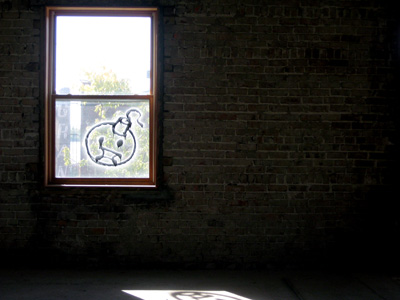 I saw the bear on a spring night in 2004 while walking with some students in Tel Aviv. We were on our way to a restaurant to meet the group that had accompanied the American writer who that afternoon had talked endlessly about basketball to the seminar. I didn’t know this part of the city with its ancient winding streets, but I was happy to follow Avi, the student who thought he knew the way. It was a cool night and I was feeling mellow and relaxed.
I saw the bear on a spring night in 2004 while walking with some students in Tel Aviv. We were on our way to a restaurant to meet the group that had accompanied the American writer who that afternoon had talked endlessly about basketball to the seminar. I didn’t know this part of the city with its ancient winding streets, but I was happy to follow Avi, the student who thought he knew the way. It was a cool night and I was feeling mellow and relaxed.
Four months into my stay in Israel, I had begun to understand that it was impossible to describe what life was like here to anyone in the U.S. Yes, I emailed home, it was a very tense time. Yes, when I ran along the beach I passed the twisted hulk of Mike’s Place, the popular club for Arabs and Israelis that had been bombed the year before, and the site of the Dolphinarium, where ninety teenagers were injured and twenty killed. Yes, there were guards in every doorway, mostly young Russians with weapons resting across their laps in a casual way. You get used to it, I said. Life goes on. I never felt at risk, even alone at night. It’s just the way it was. You had to know people well before you could sense the river of despair that flowed just beneath the surface.
That night, I wasn’t thinking about the security fence that was being constructed, or the execution of Sheik Yassin, or Hamas leaders vowing to wage holy war on the sons of Zion any more than I was thinking about my own ultimate demise. My concerns were much simpler. I was hungry. I hoped the food at the restaurant would be good. I hoped the writer, whose work I’d once admired, would move past the Knicks and what a powerhouse team they had been in the 1970s, a topic of minimal interest to me—and I had actually been a Knicks fan in those days—and of no conceivable interest to the students from England and Zimbabwe, the middle-aged Indian Jew, or anyone else in the program.
Avi was a little lost. I hoped the rest of our group knew we were on our way.
He said, “Wait, I think this is the street,” and took us around a bend.
And there, in the parking lot, I saw the creature, with its small rounded ears and flat face. “A bear,” I said. My heart began to pound.
“A bear!” The others drew close, in that instant, all of them seeing what I saw — a bear squatting on the asphalt.
For a moment and then another, we stared. No one said a word.
Then the animal straightened from its squat, and, in doing so, transformed itself from a bear into a chow and trotted off.
“Here it is,” Avi said, pointing to the carved door of the restaurant.
The students followed him inside.
I hesitated, waiting for my heart to still and for the veneer, the thin skin of complacency and denial, to cover me again.
Then I pushed open the door and joined the group.
—
Jane Bernstein is the author of five books, among them two memoirs about life with a daughter who has developmental disabilities. Her awards include arts fellowships in both New Jersey and Pennsylvania, two National Endowment Fellowships, and a 2004 Fulbright Fellowship spent in Israel, where she taught at Bar-Ilan University’s Creative Writing Program. She has written screenplays, and her essays have been published in such places as The New York Times Magazine, Ms., Glamour, Poets & Writers, Self, and Creative Nonfiction. Jane is a professor of English and Creative Writing at Carnegie Mellon University. In August, Sandra Tsing Loh, writer, humorist, NPR correspondent, and “Notable Reader” for the Barnes & Noble Review, chose Jane’s new book, Rachel in the World, as a favorite, calling it, “One of the most extraordinary, awful, funny, candid, heart-rending, brave books about motherhood I’ve ever read.”
photo by Sarah Truckey

3 comments
Dylan says:
Apr 23, 2017
Great article!
Charlie says:
Apr 25, 2017
Agreeed. Truly amazing!
Jonas says:
Apr 25, 2017
Incredible!